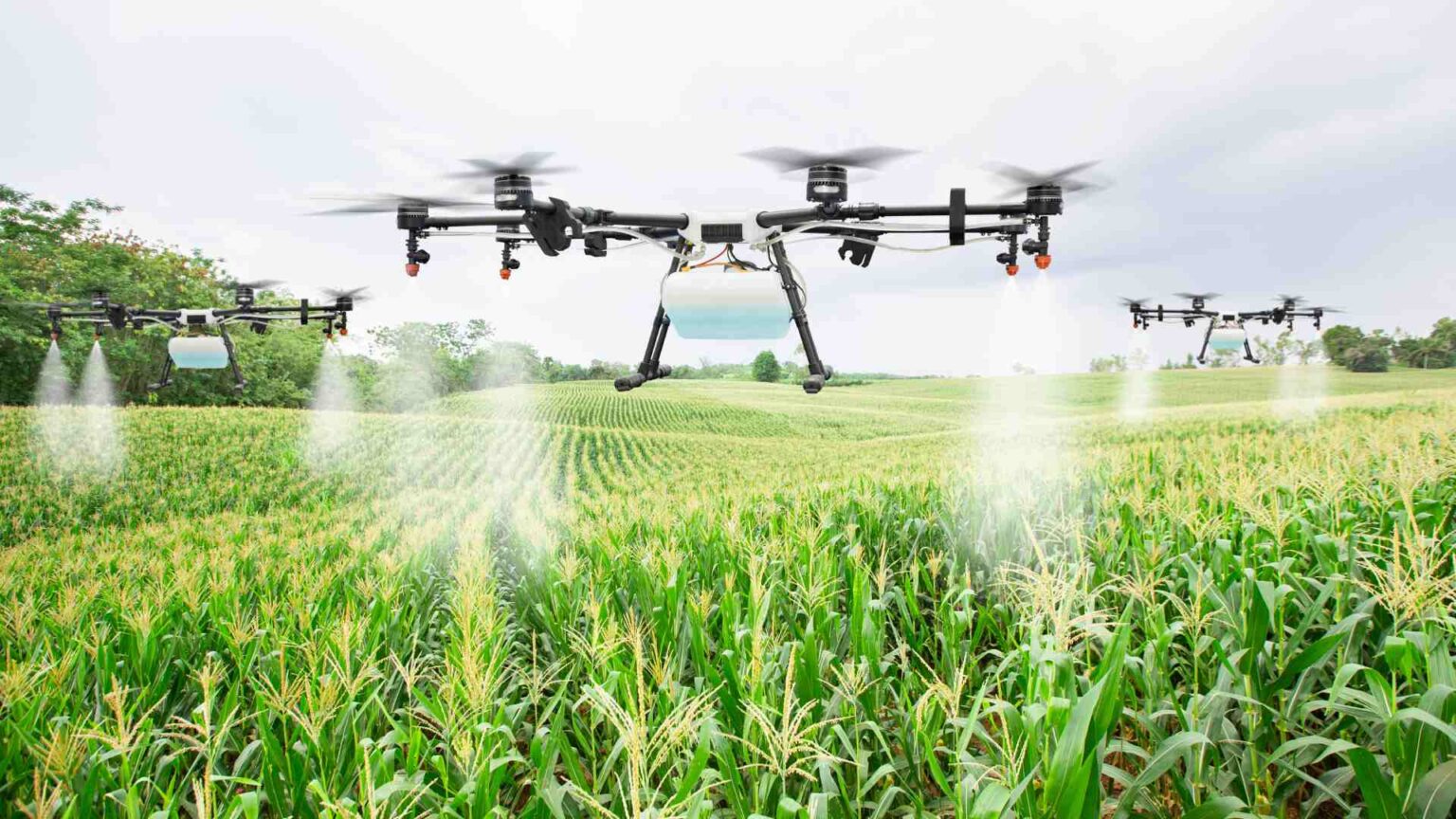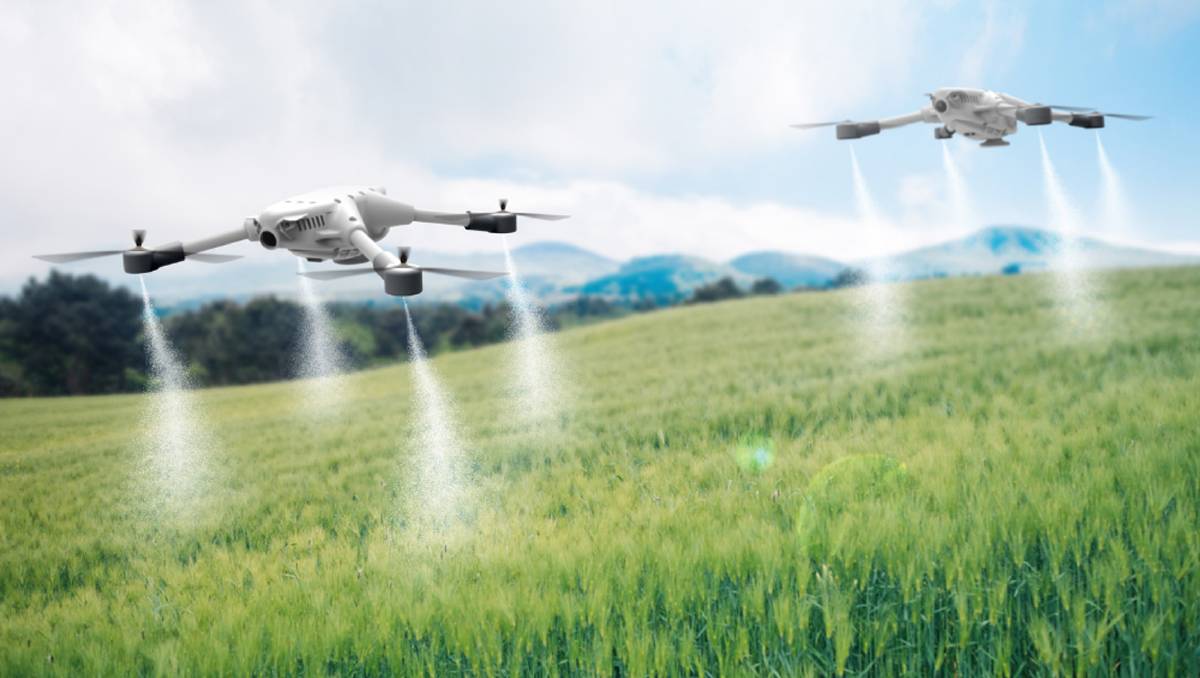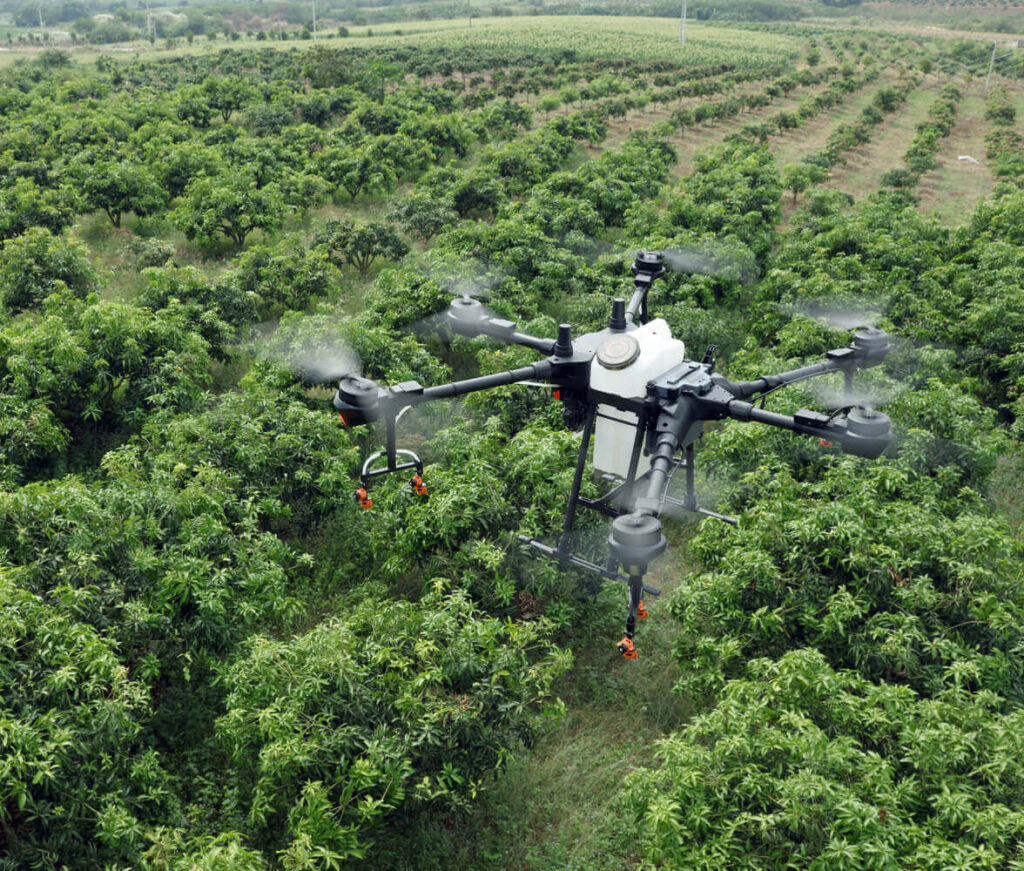Agriculture drones have revolutionized farming by providing farmers with valuable data and insights. Equipped with advanced technologies, these unmanned aerial vehicles (UAVs) enable farmers to make informed decisions, optimize resources, and increase yields.
By collecting real-time data on crop health, soil conditions, and water management, drones help identify issues early on and allow for timely intervention. They also optimize resource usage by applying inputs only where necessary and aid in precision farming techniques.
With a growing market for agriculture drone stocks, it’s clear that this technology is shaping the future of agriculture.
The Benefits of Using Drones in Agriculture
Drones have revolutionized farming practices, offering numerous advantages that enhance efficiency, productivity, and sustainability. Equipped with advanced technology, agriculture drones provide real-time data on crop health, irrigation needs, and pest infestations.
This enables farmers to take prompt action, saving time and resources while maximizing overall productivity. Additionally, drones prevent crop losses by allowing targeted application of fertilizers and pesticides, reducing wastage and minimizing environmental impact.
Precision farming techniques further optimize crop production by tailoring management practices to individual plots of land. With the continuous advancement of drone technology, the benefits provided to agriculture are set to grow even further.
Overview of Current Market Trends in Agriculture Drone Stocks
The agriculture drone stocks market is experiencing significant growth due to several key factors. Precision agriculture techniques are being widely adopted by farmers, resulting in increased crop yields and improved resource utilization.
The rising global demand for food, coupled with favorable government support and regulations, further drives the industry’s expansion. Investors recognize the potential of agriculture drones to revolutionize farming practices and actively seek opportunities in this sector.
With advanced imaging technologies and sensors, drones provide real-time data on crop health, soil conditions, and pest infestations, leading to enhanced productivity and reduced environmental impact. Government initiatives promoting sustainable farming practices contribute to the positive outlook for agriculture drone stocks.
In summary, the market trends indicate a promising future for both farmers and investors as agriculture drones continue to transform modern-day agriculture.
Exploring Growth Opportunities in the Industry
Agriculture drones are revolutionizing farming practices and presenting numerous growth opportunities for the industry. Precision agriculture techniques, supported by real-time data from drones, help farmers maximize crop yields while minimizing costs.
Governments worldwide are implementing favorable regulations to integrate drones into farming operations, offering grants and incentives to encourage adoption. With a growing global population and sustainability concerns, agriculture drones enable optimized resource allocation, early detection of crop diseases, and targeted interventions.
As technology advances, the potential for growth and innovation in the agriculture drone sector is immense.
Introduction to Prominent Companies in the Sector
The agriculture drone industry has seen the rise of key players making technological advancements and contributing to farming practices. GreenFields Agritech develops drones equipped with high-resolution cameras and sensors, enabling precise data collection for informed decision-making.
HarvestTech Solutions pioneers drone swarm technology, providing comprehensive insights into field conditions. AgriDrone Systems specializes in aerial spraying, ensuring accurate application of pesticides and fertilizers. These companies revolutionize farming practices, increasing efficiency and promoting sustainable agriculture.
Advancements in Crop Monitoring and Analysis through Drones
Company A leads the way in crop monitoring and analysis with its advanced agriculture drones. Equipped with high-resolution cameras and multispectral sensors, these drones capture detailed imagery of crops, providing valuable insights into plant health, nutrient deficiencies, and pest infestations.
Through partnerships with agricultural research institutions, Company A has developed advanced algorithms for more accurate data analysis. This enables farmers to make informed decisions about their crop management strategies.
With a strong financial track record and a commitment to innovation, Company A remains at the forefront of agricultural drone technology, poised for future growth.
Company B: Revolutionizing Pesticide Application with Drone Technology
Company B is revolutionizing pesticide application in agriculture through the use of advanced drone technology. Their drones are specifically designed for this purpose, featuring precision spraying systems, intelligent flight planning, and obstacle avoidance capabilities.
By targeting areas requiring treatment with precision and reducing overspray and drift, these drones minimize environmental impact while effectively protecting crops from pests. As a result of their technological advancements, Company B has gained significant market share in the agriculture drone industry.
With ongoing research and development efforts focused on improving efficiency and reducing costs, the company is poised to expand its presence even further.
Understanding Risks Associated with Investing in Emerging Technologies like Agriculture Drones
Investing in emerging technologies like agriculture drones carries inherent risks. It is essential for investors to understand these risks before making investment decisions. Some potential risks include regulatory changes, competition from other emerging technologies, and market volatility.
Regulatory changes can impact drone usage and require additional permits or licenses. Competition from alternative solutions in the agricultural sector poses a challenge to market dominance. Market volatility, influenced by factors such as climate change and commodity prices, adds unpredictability to investment outcomes.
By recognizing and evaluating these risks, investors can make informed choices and implement risk management strategies to navigate the dynamic landscape of emerging technologies.
[lyte id=’B50WrBkiQ1A’]






